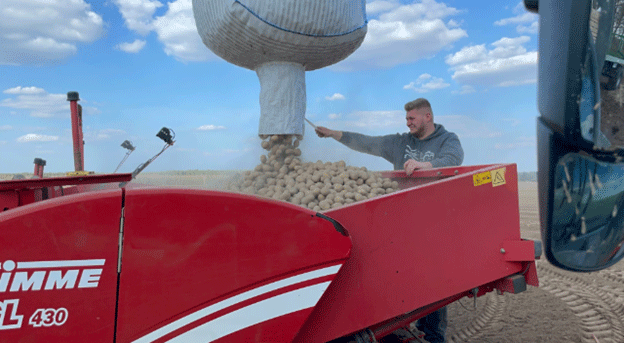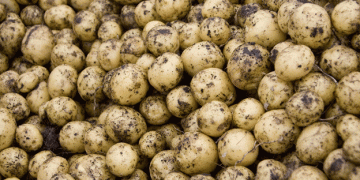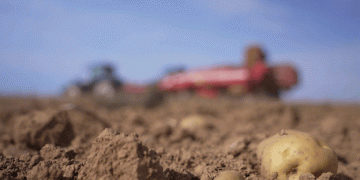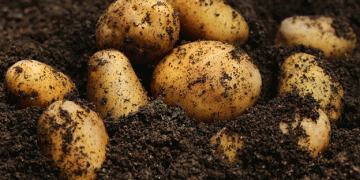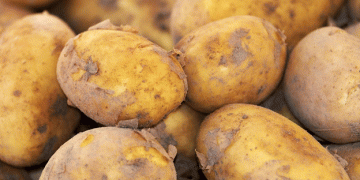As spring sweeps across northern Germany, the fields around Lübesse hum with the sound of tractors and the scent of freshly turned soil. At the Agp Lübesse Agricultural Company, the 2025 planting season is underway, starting with the early maturing variety ‘Sunita’. What might look like rural charm is, in reality, a carefully coordinated agricultural operation rooted in precision, experience, and innovation.
The Fundamentals: Precision Planting and Ideal Conditions
At Agp Lübesse, 30,000 seed potatoes are planted per hectare, using a 4-row planter set to 75 cm row spacing. The planting depth is checked manually — approximately 17 cm of soil is placed above each seed tuber. Agronomists on-site emphasize the importance of consistent seed size and healthy tubers for uniform emergence and optimal spacing.
“The soil should be loose, not clumpy or too heavy. A sandy texture is ideal,” says Erik Steinhauer, field crop manager at Agp. “We want enough structure for air and moisture, but no air pockets near the tuber.”
Each planted tuber, under the right conditions and with proper nutrition, can yield 15 to 20 new potatoes, depending on variety, climate, and soil fertility.
Soil Health and Fertilization Strategy
Proper fertilization is essential for maximizing yield and quality. The farm uses well-rotted manure or compost, avoiding fresh organic material that can introduce pests or diseases. Potassium fertilization is also recommended to strengthen the potato plants and improve resistance to stress.
These strategies are in line with global agronomic best practices. According to FAO reports, proper organic matter management and potassium application are critical to increasing tuber formation and improving shelf-life — especially as climate variability increases the risk of abiotic stress.
Early Varieties and Consumer-Driven Selection
The company plants around seven hectares of early potatoes under protective fleece, such as ‘Glorietta’, to advance harvest and meet early-season market demand. These are pre-sprouted using a method where tubers are kept at 20°C for one week before being stored in a cool, dark place until planting. This process ensures strong, short sprouts and better early growth — a method suitable even for home gardeners or small-scale growers.
New and classic varieties play a key role in crop planning. In 2025, Agp is planting:
- New varieties: Red Sonja, Nena, Theresa, Antonia, Emiliana, Columbia, Lilli
- Customer favorites: Laura (red-skinned), Belana (yellow-fleshed), Glorietta (early)
In addition, a new seed potato variety called ‘Corinna’ is being trialed — a firm, early variety positioned for both home gardens and retail sales.
Storage and Year-Round Supply
Agp Lübesse has invested heavily in modern storage infrastructure, allowing them to store potatoes well into the summer months. With proper ventilation and climate control, tubers remain market-fresh through June, providing continuity of supply to partners like Edeka and Norma.
This reflects a broader trend in European potato farming: the move toward long-term storage, value-added product development, and consumer-focused breeding programs.
The work at Agp Lübesse is a showcase of how modern potato farming blends tradition with technology. With precise planting methods, focus on soil health, and strategic variety selection, farmers are not just growing crops — they’re adapting to market demands, climate change, and consumer tastes. For agronomists, scientists, and producers alike, these insights from the field in Germany offer replicable models for success.
